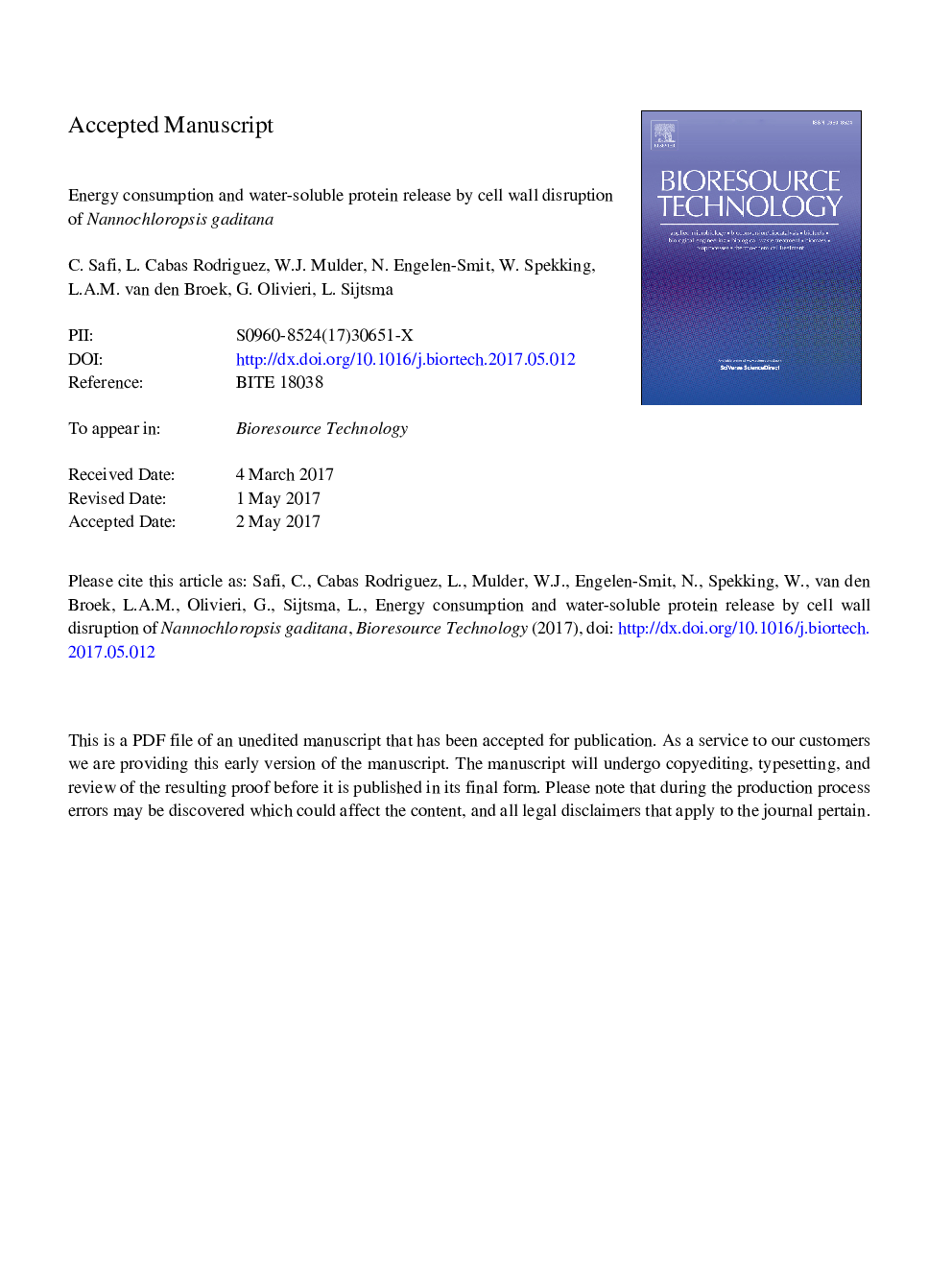| Article ID | Journal | Published Year | Pages | File Type |
|---|---|---|---|---|
| 4997172 | Bioresource Technology | 2017 | 23 Pages |
Abstract
Several cell disruption methods were tested on Nannochloropsis gaditana, to evaluate their efficiency in terms of cell disintegration, energy input and release of soluble proteins. High-pressure homogenization (HPH) and bead milling were the most efficient with >95% cell disintegration, ±50% (w/w) release of total proteins and low energy input (<0.5 kWh.kgâ1biomass). Enzymatic treatment required low energy input (<0.34 kWh.kgâ1biomass), but it only released ±35% protein (w/w). Pulsed Electric Field (PEF) was neither energy-efficient (10.44 kWh.kgâ1biomass) nor successful for protein release (only 10% proteins w/w) and cell disintegration. The release of proteins after applying HPH and bead milling always required less intensive operating conditions for cell disruption. The energy cost per unit of released protein ranged from 0.15-0.25 â¬.kgProteinâ1 in case of HPH, and up to 2-20 â¬.kgProteinâ1 in case of PEF.
Related Topics
Physical Sciences and Engineering
Chemical Engineering
Process Chemistry and Technology
Authors
C. Safi, L. Cabas Rodriguez, W.J. Mulder, N. Engelen-Smit, W. Spekking, L.A.M. van den Broek, G. Olivieri, L. Sijtsma,
